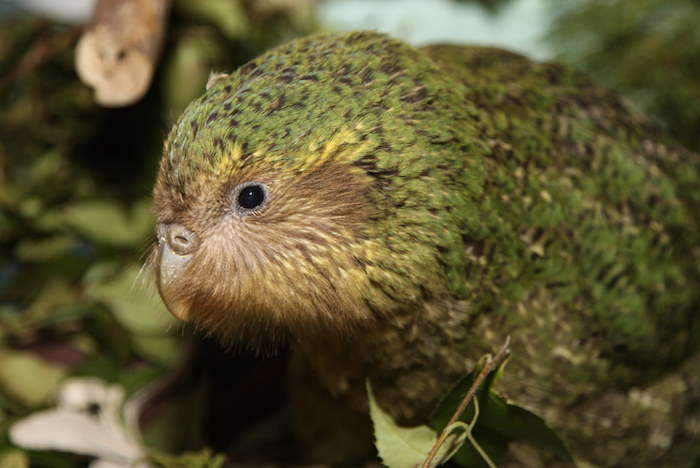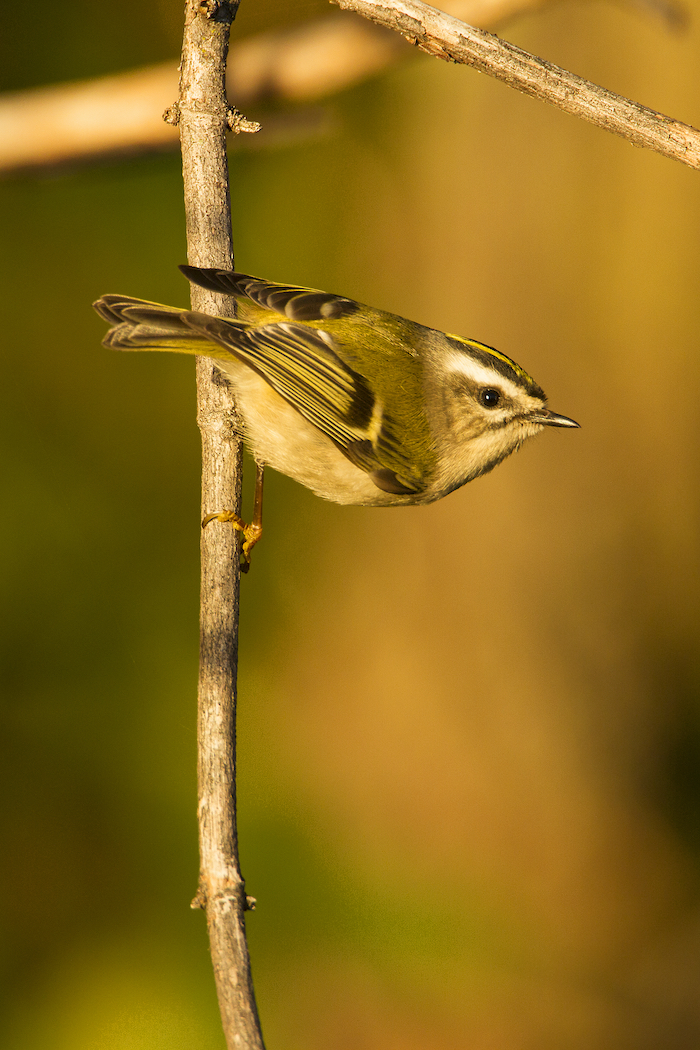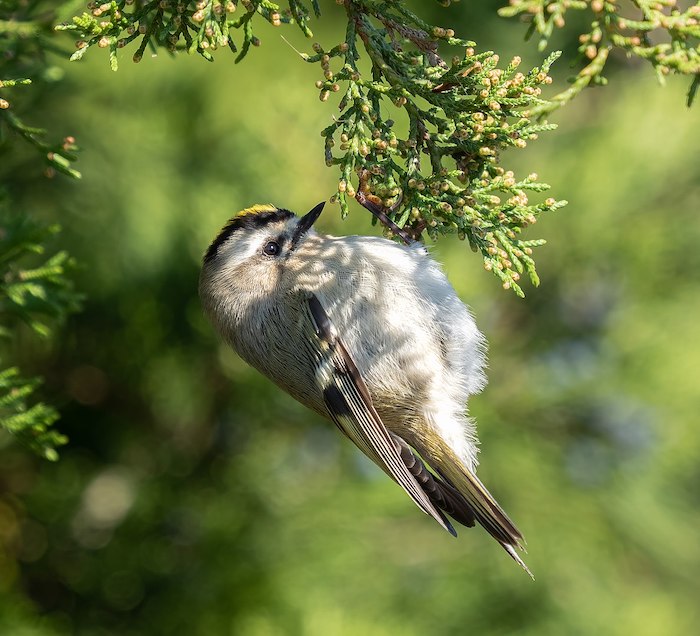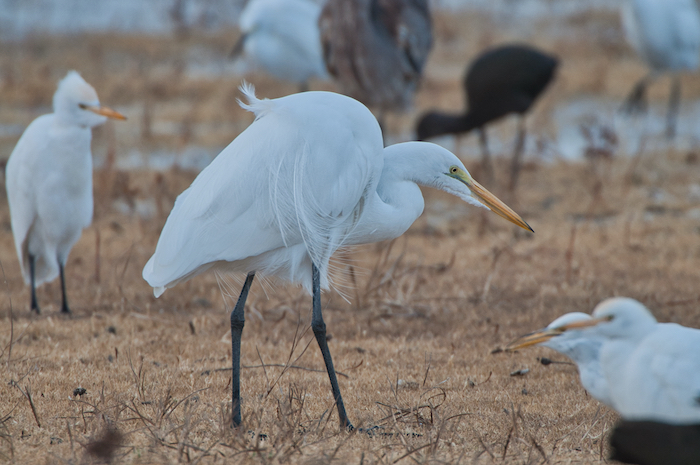
Great Egret with Cattle Egrets
Camouflage clearly makes survival sense. But Nature doesn’t settle for just one kind of sense. Out along river shorelines and on the damp fields of winter, great egrets are blatantly visible, as uncamouflaged as possible in head-to-tail white.
They’re large. They’re out in the open. They’re plainly visible. Shouldn’t they be dead?
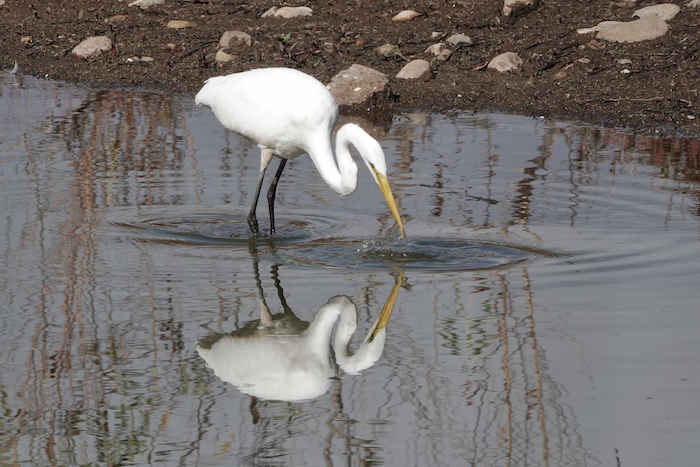
Great Egret Reflection
A hundred years ago they almost were dead. Ninety-five percent of great egrets in North America were wiped out, and it was indeed because of their feathers. The fashion of the day was to decorate lady’s hats with their fancy plumes, and so the birds were slaughtered and plucked. The plumes are especially showy in breeding season, so the birds were often taken while they had chicks in the nest; the young of course subsequently starved. This avian massacre sparked the founding of the Audubon Society, whose emblem became the great egret. Those Audubon activists moved a responsive Congress to pass the Migratory Bird Act in 1913, and egrets and other feather-hunted birds quickly recovered.

An interesting side note on John James Audubon, who died half a century before the organization took his name in honor of his famed bird paintings: he was blind to birds’ conservation needs. According to Smithsonian Magazine “Audubon insisted that birds were so plentiful in North America that no depredation—whether hunting, the encroachment of cities and farmlands, or any other act of man—could extinguish a species.” Recent trends, of course, have shown him exceedingly wrong.
Nonetheless, although other birds are in decline, great egrets are flourishing. They are versatile, readily foraging in the shallows of marshes, riversides, or coastal shores for fish, or reptiles, amphibians, crustaceans, or insects; or hunting in the deeper water of protected bays by standing, toes spread, on floating kelp. Or they will move into fields and spear gophers or voles with their dagger-like bills. Their foraging flexibility allows them to shift from less productive habitats into livelier ones.

Great Egret Fishing
Beyond their feeding versatility, great egrets nest with flexibility, too. They nest in colonies with other egrets or herons; but they can nest alone, too.
The male starts to build a platform of sticks, high in a tree; or, as availability requires, at the top of a bush, or even on the ground.
He courts a female with displays of his fancy plumes and his long beak, which turns green at its base, and with tumbling flights and offerings of twigs. She, also dressed to impress, may return his displays and then help complete the nest. Together they incubate and feed a few chicks. Birds are not universal practitioners of civilization, however, and if food is tight, larger chicks may stab and kill their younger siblings. It takes a while for young egrets to develop the cooperation and tolerance their parents exercise.
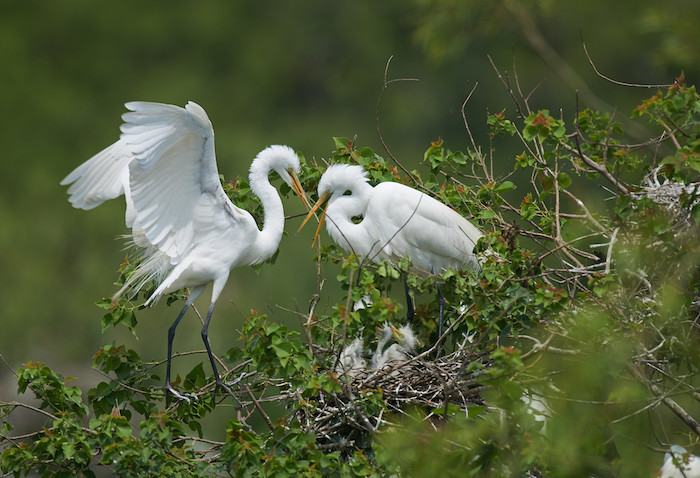
Great Egrets Nesting By Larry Goodwin
There are always things we don’t know. Great egrets are large, and large birds often mate for life. But egrets also carry out extensive courtship, which can suggest the wooing of a new mate. Or, again, perhaps egrets are among those fine creatures who sustain courtship throughout their relationship. We just don’t know.
But we know that they survive and prosper without a bit of camouflage. It’s a beautiful thing that Nature supports more than what at first glance seems rudimentary.




